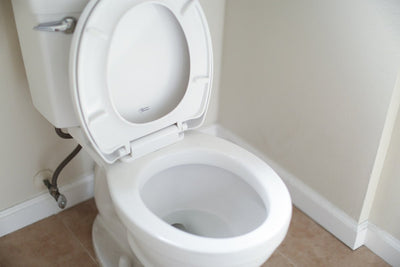Senior Health 101: A Guide to Bathroom Safety Proofing
Our bodies become frailer by the year, and our equilibrium on slick, hard surfaces is unsteady. With that being said, seniors need a safe restroom.
Today, we’ll take you through the bathroom, feature by feature, highlighting common issues and solutions for making changes so that elders can use the restroom securely and independently. Read on to discover this guide to bathroom safety proofing for seniors.
Safety Proofing the Toilet
The phrase "ADA-compliant" refers to compliance with the Americans with Disabilities Act of 1990. Since the enactment of this law, all residential properties have been required to be accessible. ADA-compliant toilets range in height from 17 to 19 inches.
If an elderly person is unable to use or exit the toilet, they may become trapped or fall to the ground. The elderly should also not move using toilet paper holders or towel racks.
Caregivers can use a toilet with a raised seat or a toilet with a higher seat. Seniors should have access to hold bars or counters to help them stand after using the restroom.
Safety Proofing the Bathtub
Seniors who want to bathe in a tub should have fall prevention equipment installed. Suggestions for equipment include tub grab bars, transfer-friendly tub ledge rails, anti-slip matting, accessible soap dispensers, strategic towel placement, bath benches, and fall alert devices.
Safety Proofing the Shower
Showers are safer than tubs because the thresholds are lower, allowing seniors to avoid elevating their legs or tripping over ledges. Here are some shower safety guidelines for the elderly.
For the shower, stools, chairs with back supports, adjustable height, suction-cupped feet, armrests, bariatric seats, and other similar items should also be considered. When selecting a shower chair, keep your needs and ideal weight in mind.
Safety Proofing the Bathroom Floor
On the bathroom floor, there should be no lips, bumps, thresholds, throw rugs, or clutter. While refurbishing, non-slip tiles and vinyl flooring keep elders from slipping and falling.
If seniors are exposed to colors or shapes that interfere with their capacity to detect depth, they may develop vertigo.
Safety Proofing the Bathroom Sink
No plugs or wires should be near running water near sinks or vanities. All handicap metrics must adhere to ADA guidelines: The countertop height is 34 inches, and the faucet height is 48 inches.
Because ADA-compliant dimensions are not always attainable in older homes, apartments, and mobile homes, modifications are the best alternative.
A larger or detachable faucet head, a soap dispenser, and outlet adapters are all possible pieces of equipment.
Safety Proofing the Personal Care Activity
In the bathroom, personal care activities such as tooth brushing, medication management, hair maintenance, and dressing are performed (excluding showering and toileting).
Personal care goods should be stored when not in use to avoid clutter. Personal care devices for the elderly with impaired physical and/or mental function, such as electric or wide-handled toothbrushes, toothpaste dispensers, easy-to-use razors, flexible mirrors, and more.
Safety Proofing the Lighting
Seniors' eyesight deteriorates, making it difficult and unsafe to navigate poorly lit environments. Make sure the restroom has enough illumination, especially at night. This can be done by installing always-on or motion-activated night lights.
Safety Proofing the Storage
Keep the restroom and floor clean to avoid falls, spills, fires, and other hazards. Vanities with towels and toiletries storage are common in bathrooms.
Other restrooms may necessitate some creativity. Put reachable shelves on any available wall space. Keep only the necessities in the bathroom and everything else outside.
Conclusion
Some elders are afraid of poorly fitted bathrooms with slick, harsh surfaces. After all, bathroom safety changes must be implemented as we get older.
As such, examine the comfort of your bathroom component by component and category by category. For assistance with equipment and measures, consult a rehabilitation specialist.
Are you looking for bathtub steps for seniors? HearGlow is here to provide you with products that can sustain a healthy lifestyle for the elderly. Browse our page today and see what we have to offer!
Related Articles
Read more Bathroom & Toilet For Seniors articles.








